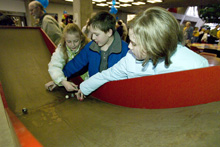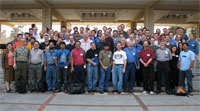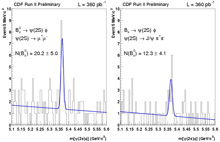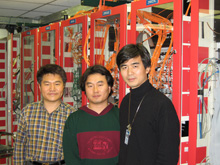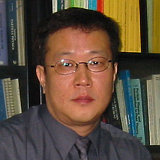 | Thursday, January 26, 2006 |
|
Thursday, January 26 2:30 p.m. Theoretical Physics Seminar - Curia II Speaker: E. Lunghi, Fermilab Title: Analysis of Large Tan beta Effects in the MSSM from the GUT Scale 3:30 p.m. Director's Coffee Break - 2nd Flr X-Over 4:00 p.m. Accelerator Physics and Technology Seminar - 1 West Speaker: L. Prost, Fermilab Title: Progress of Electron Cooling at the Recycler
Friday, January 27 |
|
Extended Forecast |
Secon Level 3 |
|
Thursday, January 26 -Southwestern Chicken Tortilla -Philly Style Cheese Steak -Chicken Pot Pie -Tomato Basil Chicken Parmesan -Southwestern Turkey Wrap -4 Cheese Pizza -Marinated Grilled Chicken Caesar Salads |
|
Thursday, January 26
Wednesday, February 1
Chez Leon Menu |
| Fermilab Today is online at: http://www.fnal.gov/today/ Send comments and suggestions to today@fnal.gov Fermilab Today archive Hurricane Relief Page Fermilab Today PDF Version Fermilab Result of the Week archive Fermilab Safety Tip of the Week archive Linear Collider News archive Fermilab Today classifieds Subscribe/Unsubscribe to |
| All Hands Meeting Friday 1:30 p.m. Ramsey Auditorium |
|
Pier Oddone will announce
an important new appointment at the laboratory at an All Hands meeting on Friday, January 27 at 1:30 p.m. in
Ramsey Auditorium. He will also discuss the
state of the laboratory and the on-going analysis of the laboratory
organization, with plenty of time for questions and answers. Overflow seating will be available in
One West, with audio and video provided. Streaming video is available here.
|
|
Education Office Offers Family Open House, Feb. 19 |
||
|
||
|
This year's Education Office Family Open House will take place on Sunday, Feb. 19. The event offers free family-style hands-on activities and exhibits, make-and-take projects, science shows and tours. New this year will be a reprisal of Leon Lederman's "Late Show with Leon," which first appeared as a Web cast in the fall. Lederman will interview three young Fermilab physicists during a live show in Ramsey Auditorium. Also new this year will be a number of science shows adapted from the World Year of Physics classroom presentations.
The Ask-a-Scientist group will return to the 15th floor, back by popular demand. "I remember being impressed last year when I walked onto the 15th floor and saw how engaged everyone was," said Spencer Pasero, an education specialist at Fermilab. "There were good, lively discussions going on and the scientists were really getting into it." Other returning popular events from last year's Family Open House include Mr. Freeze's cryogenics show, the Gravity Accelerator exhibit, and tours of the Linear Accelerator gallery and Main Control Room gallery. Plans for tours to additional sites are now being finalized.
The Family Open House will take place on Sunday, Feb. 19, from 12:00 to 5:00 p.m. The event is free but registration is required. All ages are welcome, but the open house is most appropriate for children in grade 3 and up. Tours are restricted to ages 10 and up. Participants can register online. Contact Nancy Lanning at edreg@fnal.gov or 630-840-5588 for more information. |
|
OSG Ramps Up and Reaches Out
| ||
|
||
|
More than 120 grid computing researchers and scientists traveled to the University of Florida this week for the third Open Science Grid Consortium meeting. This meeting, the first since the Open Science Grid's official launch in July, focused on establishing new partnerships with other grids and institutions, connecting the needs of grid applications with the realities of the grid facility, and transitioning to a new management structure.
Read More |
|
DOE Press Release, January 25, 2006: Department of Energy Supercomputers to Analyze Hurricane Coastal Surges, Help Plan Rebuilding in Louisiana, Gulf Coast
WASHINGTON, D.C. -- The U.S. Department of Energy’s Office of Science has allocated 400,000 processor hours of supercomputing time at its National Energy Research Scientific Computing (NERSC) Center to the U.S. Army Corps of Engineers New Orleans District to run a series of simulations of hurricane protection projects within coastal Louisiana.
|
|
Strange Beautiful Meson Has a New Charming Mode |
|
The Bs/Bd/Bu mesons consist of a
bottom quark and a strange/down/up anti-quark. They can decay to final states involving charmonium, a charm quark and anti-quark bound together by the strong force, in a bound state similar to the hydrogen atom. Just like the hydrogen atom, charmonium has a ground state and several excited states, such as Psi(2S) and J/Psi (or Psi(1S) ), the latter being the first (or lowest energy) excited state of the charm anti-charm bound state. In the past, measurements have shown that the ratio of the branching fractions of Bd and Bu decay to the 2S final states over 1S final states are approximately the same, about 60 percent. This indicates that the ratio doesn't really depend on whether the B meson contains a down quark or an up quark. Does this "60 percent rule" apply to Bs meson containing a strange quark as well?
Bs to J/Psi Phi decay has been observed so far, however, Bs to Psi(2S) phi decay has not been observed. If this 60 percent rule also applies to the Bs meson, then CDF should be able to observe the Bs to Psi(2S) phi decay. Indeed, CDF has now announced the first observation of this decay using only 360 pb**-1 data, in both Psi(2S) decay into two muons and Psi(2S) decays into J/Psi Pi+Pi- channels. The analysis team also measured the ratio of the branching fractions between Bs ->Psi(2S) Phi and Bs->J/Psi Phi, and finds that the "60 percent rule" indeed also applies to the B meson containing a strange quark. Just like the Bs to J/Psi Phi decay, the Bs to Psi(2S) phi is also very interesting since it can be used to determine the lifetime difference of the long-lived (Heavy) and short lived (Light) Bs meson state. Observing the Bs to Psi(2S) Phi decay will allow CDF to make an independent measurement of the lifetime difference in the future. |
| Result of the Week Archive
|
|
January 23 - 25
- Tevatron startup in progress. Read the Current Accelerator Update Read the Early Bird Report View the Tevatron Luminosity Charts
|
|
Service Award Luncheon Time Change The 20 Year Service Award Luncheon for employees who completed 20 years of service in 2005 has been rescheduled for 11:30 a.m. on Friday, January 26. All 20 year celebrants are asked to gather in the Wilson Hall Atrium at 11:00 a.m. for a group photo before lunch. If you have questions, please call Jeannelle Smith on x4367.
|
